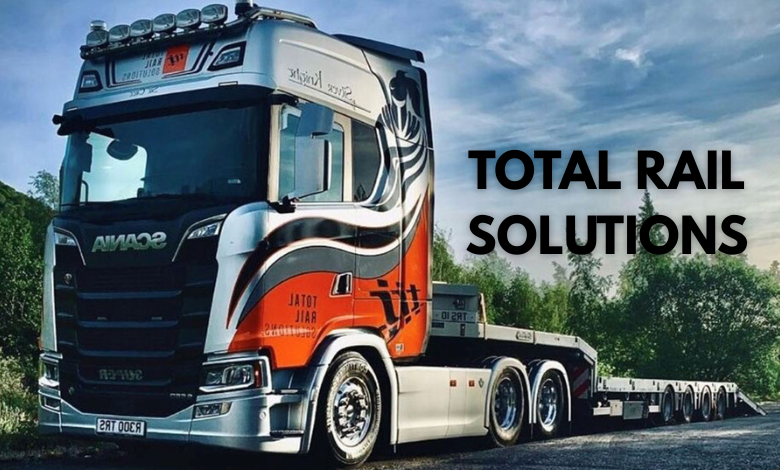Total Rail Solutions: Building the Future of Transport

Railways have always fascinated me. Growing up, I remember standing near the local station watching freight trains roll by, wondering how so many industries depended on these long steel tracks. Decades later, that curiosity has turned into a deep respect for the professionals who build and maintain the complex systems we often take for granted. What we now call total rail solutions brings all these services together under one umbrella, making rail transport safer, more efficient, and better prepared for the future.
This article will walk you through what total rail solutions really mean, why they matter, and how they shape both industries and communities. If you are new to the subject, don’t worry. I’ll break it down into simple explanations, share examples, and highlight real benefits.
What Are Total Rail Solutions?
Total rail solutions refer to a complete set of services and systems that cover every aspect of railway development and operations. Instead of handling construction, safety, and maintenance separately, these solutions integrate everything into a single, coordinated approach.
Think of it like building a house. You could hire different contractors for plumbing, wiring, roofing, and flooring. But what if there was one trusted company that managed it all, ensuring everything worked together seamlessly? That’s what total rail solutions do for the railway sector.
They usually include:
-
Infrastructure development: Planning and constructing tracks, bridges, and tunnels.
-
Engineering and signaling: Installing modern control systems that guide trains safely.
-
Maintenance and safety services: Regular upkeep to prevent accidents and delays.
-
Project management and consultancy: Coordinating timelines, budgets, and regulatory requirements.
By combining all these elements, total rail solutions reduce risks, cut costs, and speed up delivery.
Rail Infrastructure and Engineering
One of the cornerstones of total rail solutions is infrastructure development. Building new railway lines or upgrading old ones is no small task. It requires detailed planning, land surveys, environmental assessments, and a skilled workforce.
I once spoke with a project engineer who worked on a regional rail upgrade in Quebec. He explained how the track bed alone needed weeks of preparation before any steel rails could be laid down. Without proper groundwork, the entire system could face premature wear and costly repairs.
Track installation is another critical service. It’s not just about laying steel rails; it involves advanced machinery, precision alignment, and durable fastening systems. Poorly aligned tracks lead to rough rides, high fuel consumption, and even derailments.
Finally, rail project management ties everything together. Coordinating hundreds of workers, suppliers, and safety inspectors is a massive challenge. Having an integrated solution helps projects finish on time and within budget.
Safety and Maintenance
Rail safety is something you can’t compromise on. A single failure in signaling or maintenance can have devastating consequences.
Maintenance practices include track inspections, welding repairs, ballast cleaning, and vegetation control near rail lines. Some companies now use drones and AI-powered systems to scan tracks for weaknesses. This proactive approach prevents accidents and reduces downtime.
I remember hearing about a commuter rail line that faced months of delays because routine inspections were neglected. It showed how crucial ongoing maintenance is. Total rail solutions make safety part of the system from the very start rather than treating it as an afterthought.
Technology and Innovation in Rail
Railways are no longer just steel and wood. They’re evolving into smart systems powered by technology.
Digital signaling systems allow trains to run closer together while staying safe, which increases efficiency. For example, the European Train Control System (ETCS) has been adopted across many countries to standardize signaling and prevent collisions.
Automation and AI are slowly entering the field. From predictive maintenance that spots faults before they happen to driver-assist technologies, railways are becoming smarter and more reliable.
Sustainable rail infrastructure is another exciting area. Recycled steel, energy-efficient locomotives, and solar-powered signaling stations are helping reduce carbon footprints. Considering the global push for green solutions, rail transport has a big role to play.
Impact on Industry and Society
Rail transport isn’t just about moving trains. It’s about moving economies forward.
-
Freight transport efficiency: A single freight train can carry the load of 300 trucks, reducing road congestion and pollution.
-
Passenger services: High-speed trains make commuting faster and more comfortable, encouraging people to leave cars behind.
-
Economic growth: Regions with strong rail networks attract investment, create jobs, and connect communities.
A real-life example is Canada’s ongoing investment in urban rail. Cities like Montreal and Toronto are expanding light-rail networks, easing traffic, and cutting travel times. This shows how total rail solutions directly improve quality of life.
Benefits of Choosing Total Rail Solutions
Choosing an integrated provider for rail services comes with several advantages:
-
Cost efficiency: Bundled services mean fewer middlemen and reduced overhead.
-
Time savings: Projects run faster when handled by one coordinated team.
-
Reliability: Integrated systems lower the risk of miscommunication and errors.
-
Safety assurance: From planning to maintenance, safety is built into every step.
These benefits explain why many governments and private companies are leaning toward total rail solutions instead of piecemeal contracts.
Challenges and the Future of Rail Solutions
Of course, no system is perfect. Total rail solutions also face challenges:
-
Environmental concerns: Large projects can disrupt ecosystems. Companies must plan carefully to minimize damage.
-
Modernization needs: Older railways require upgrades, which can be expensive and disruptive.
-
Funding and regulation: Rail projects often need public-private partnerships and strict compliance with laws.
Looking ahead, the future of rail solutions lies in greater sustainability, digital transformation, and international cooperation. Imagine AI-driven trains, fully renewable-powered stations, and cross-border networks running seamlessly. That’s where the industry is headed.
Conclusion
Total rail solutions are about more than building tracks. They bring together engineering, safety, maintenance, technology, and management into one unified approach. This integration makes railways safer, faster, and more reliable, benefiting both industries and communities.
As someone who has always admired the quiet power of rail transport, I see these solutions as the backbone of modern infrastructure. They don’t just connect cities; they connect opportunities, economies, and people.
FAQs
Q1. What does “total rail solutions” mean?
It refers to an integrated package of services covering railway construction, signaling, maintenance, safety, and project management.
Q2. Why are rail solutions important?
They ensure efficient, safe, and cost-effective transport for both freight and passengers.
Q3. How does technology improve railways?
Through digital signaling, predictive maintenance, and sustainable infrastructure, technology makes rail transport more reliable and eco-friendly.
Q4. What are the main benefits for businesses?
Businesses benefit from lower transport costs, better logistics, and improved supply chain reliability.
Q5. What is the future of total rail solutions?
The future includes more automation, greener infrastructure, and advanced cross-border cooperation in transport.



